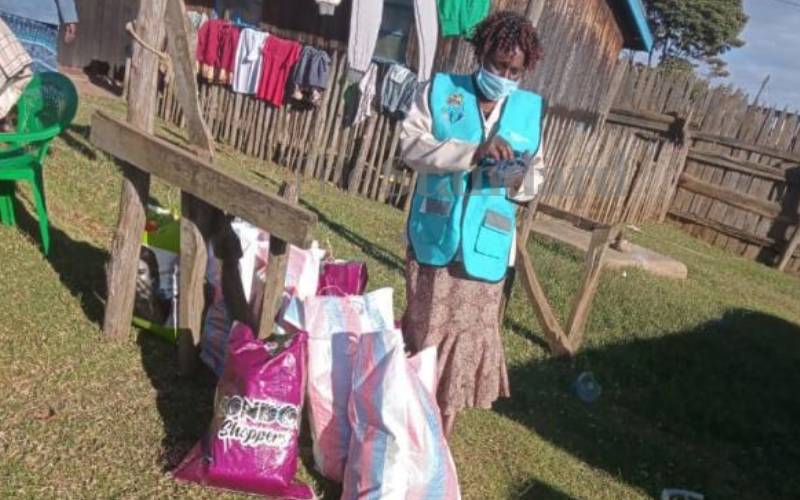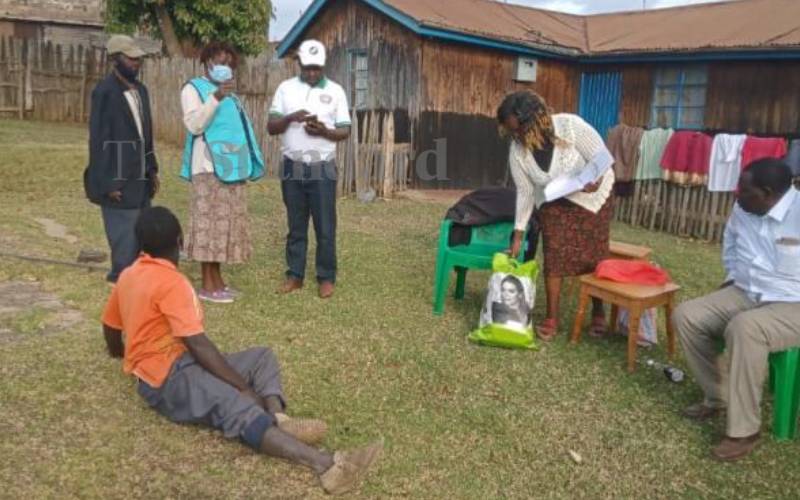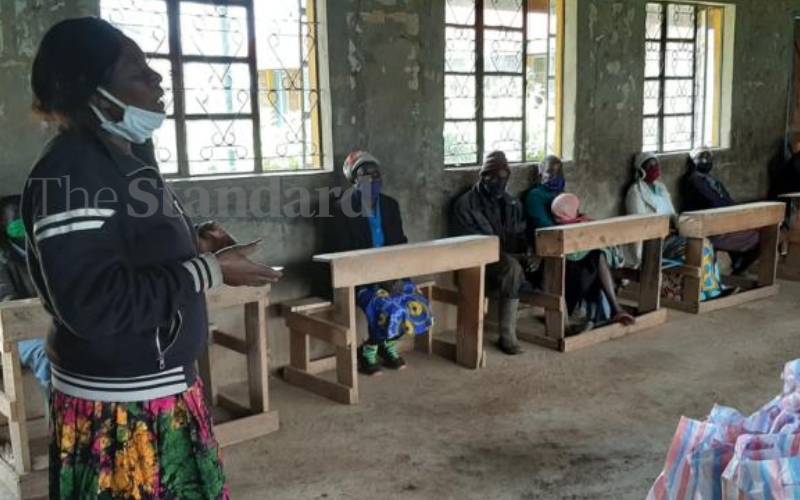The neighbourhood was burning and young men were increasingly becoming heartless, killing each other in their numbers, 13 years ago.
That period, the country was staring at a civil war following the 2007-2008 post-poll violence, but Beatrice Kimani, 62, stands tall to date, because of her deeds. The retired teacher calmed the storm, and is still sustaining it.
In Burnt Forest, Uasin Gishu County, where she lives, Kimani, a teacher, is known as a peace icon.
When men were violently clashing and destroying property in the height of the violence, 13 years ago, Kimani rallied women to boycott cooking for their fighting husbands and sons.
“I am still assembling women in the grassroots until today. Our men know that there will be no food if they cause chaos again,” the self-effacing Kimani says.
The disrupted food supply dealt a blow to the hostile men, mainly from the two dominant communities in the area – the Kalenjin and Kikuyu, who were fighting.
As the country heads into a momentous electioneering period, and amidst calls for unity, Kimani says inter-community women networks will stop men from fighting over election-related issues.
“There are still fears of violence but as women, we are on the lookout. Never again, will we allow fights that cause suffering among women and children. Women’s role is to provide food for fighters, and that will never happen again. We love the peace we are enjoying,” an optimistic Kimani says.
![]()

Beatrice Kimani was born in Nyeri and trained as a teacher. She moved to Burnt Forest in the early ’90s and was posted to a primary school in Kesses, Uasin Gishu County.
Her worst fear when she arrived was that of election skirmishes. She witnessed bloodletting in 1992 and lived in panic.
Burnt Forest, where they chose to settle in, has been a hotbed of election-related skirmishes, and is dominated by the-then two antagonistic communities. It bore the brunt of the ugly 2007-2008 post-election violence.
It is also in Burnt Forest, Kesses constituency, where the then-young teacher met her husband, got married and settled along the busy Nairobi-Uganda highway.
She was later transferred to Arnesens Primary school and rose through the ranks to be a deputy headteacher.
In 2000, she decided to work as a volunteer for the Rural Women Peace Link and juggled between teaching and sensitizing women and girls on retrogressive practices such as Female Genital Mutilation (FGM).
But the horrendous fighting during the 2007-2008 post-election violence would become the worst nightmare for Kimani.
The happenings of that fateful period jolted her into the peace initiative, which she still engages in, more than 13 years after the end of the bloodletting – that until today, mirrors Kenya’s sordid past and the shame of violent electioneering periods.
“I woke up one morning at the height of the violence and I saw young men from the two tribes slashing each other using machetes. I rushed to the battlefield and stood in the middle. I begged for peace by lying that a baby had been born in the neighbourhood and their fighting was waking the newborn. When they calmed down, the violent youth from both communities were mad at me. They wondered why I stopped the fighting. My husband, from the Kalenjin community, had to flee because my tribesmen threatened to kill him,” she said.

When the violence broke out minutes after the announcement of the presidential results, Kimani says, she was hosting a group of Kalenjin women. Her home consequently became a target of attacks from Kikuyu youth.
In the face of the threats and with the mass killings intensifying, Kimani left her home and moved to the nearby St Patrick Catholic Church.
She would move from one village to the other, moving women, a majority of them women from the two warring communities to the Church.
Later, the number of internally displaced persons swelled and were prompted to move to Arnesens Primary School.
“I had the keys to the school and took the risk of moving the IDPs, mainly women there. The IDPs were from both communities. Some men were also in the group. Even before we settled down at the school, the institution became a centre of violence. The youth shifted their battlegrounds to the school. Some police officers who had been deployed quelled the fights, and we continued taking refuge there,” she narrates.
Kimani said after the skirmishes had been repressed following the formation of a coalition government between the then President Mwai Kibaki and his then-political nemesis Raila Odinga, displaced families were encouraged by the government to return to their homes.
But according to her, only a few families were willing to return to their homes because most houses had been torched and communities were still hostile against each other.
“We decided to have two separate meetings for women from each of the two warring communities and each group of women had no kind words for the other community,” says Kimani.
She adds: “We discovered that women were inciting their men and their youthful sons into fighting. After meeting women from each tribe separately, we held a joint meeting which was chaotic. Harsh words were traded. But eventually, they buried the hatchet after discovering that the market where they used to sell vegetables and potatoes was desolate. They resolved to live harmoniously and continue doing business.”
Kimani said on behalf of the women, she wrote to the then US ambassador to Kenya Michael Ranneberger who helped source for funds, resulting in the reconstruction of the market that is now the uniting factor in Burnt Forest.

“At some point during the violence, I asked women to stop cooking for their husbands and sons if they failed to end the skirmishes,” she recalls.
Since then, she says, she has been sensitizing women from both communities on the early signs of election violence and how to nip election-related chaos in the bud.
“There were several IDPs in the area and the number of pupils at Arnesens Primary School shot up from about 600 in 2007 to 2,000 in March 2008. The school population is now 1,000 after IDPs moved to their farms. May our country never again witness any election-related violence,” she pleaded.
Olenguse location Chief Samuel Bitok lauded Kimani’s efforts, saying it has helped to enhance cohesion in the area.
“She is our peace icon, and we celebrate her during this year’s Mashujaa Day. We encourage her to continue championing peace. Her efforts have borne fruits, and we now have peace,” the Chief said.
Bitok said the retired teacher made it her personal responsibility to move around five locations spearheading peace efforts.
“The peace ambassador has been hijacking my regular meetings, and she helped the security agencies in a big way. We urge other women to emulate her,” he said.
Credit: Source link